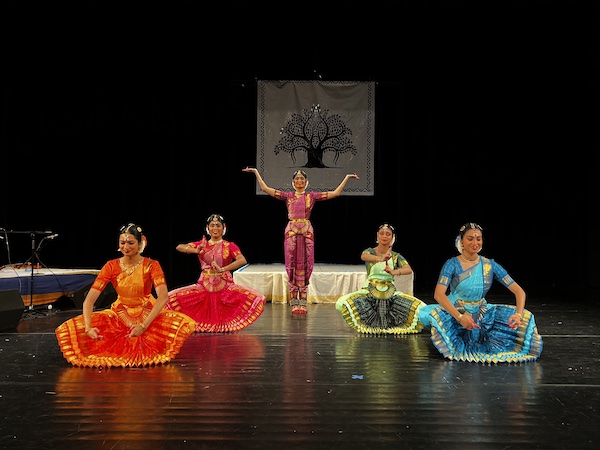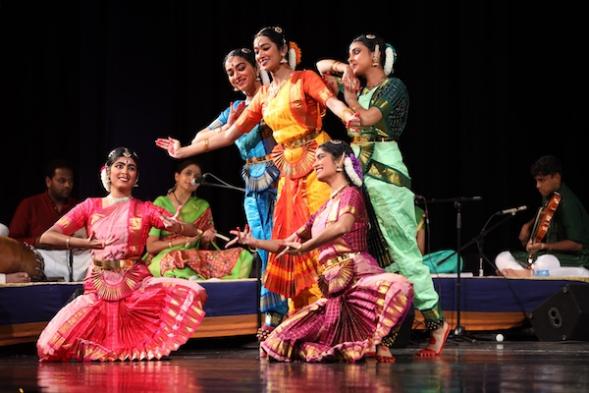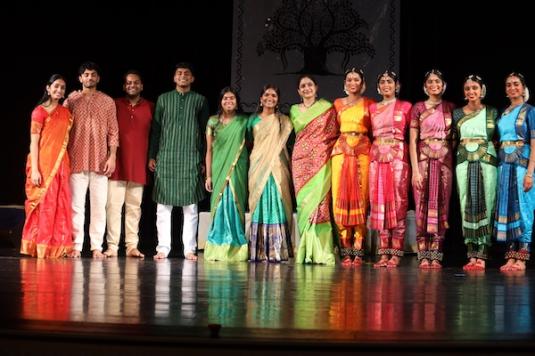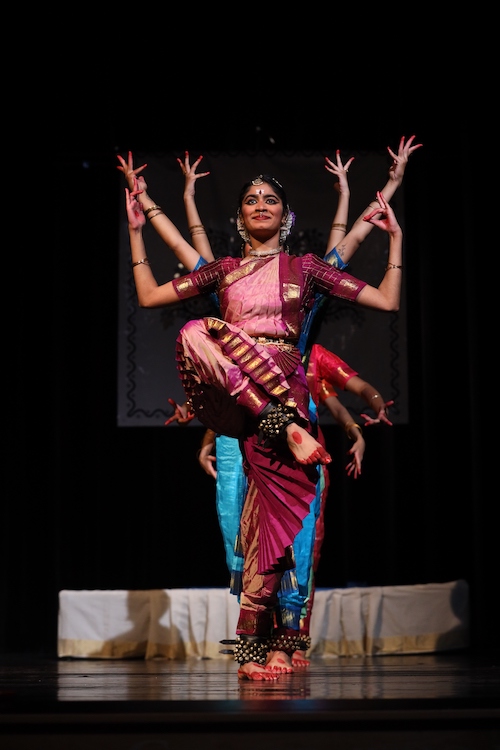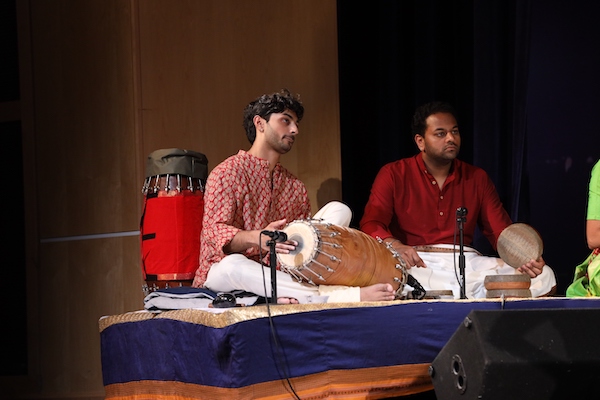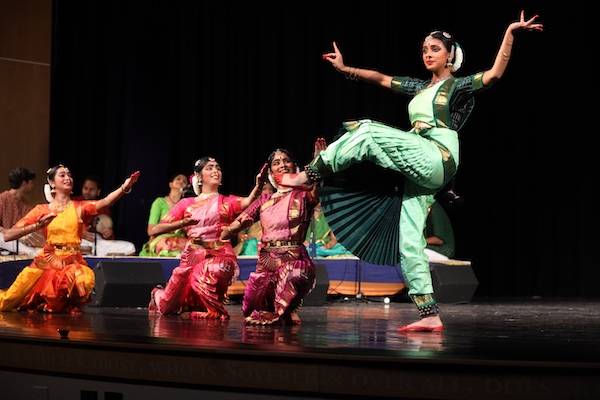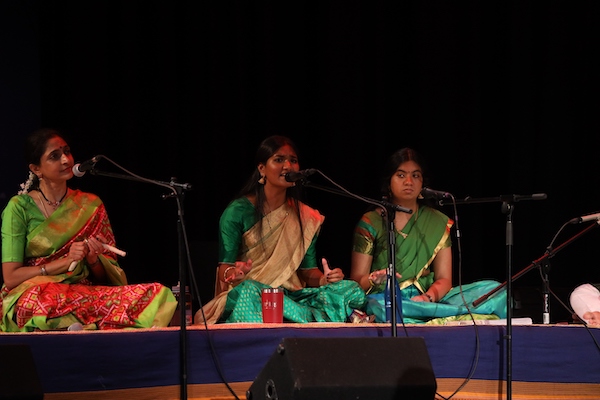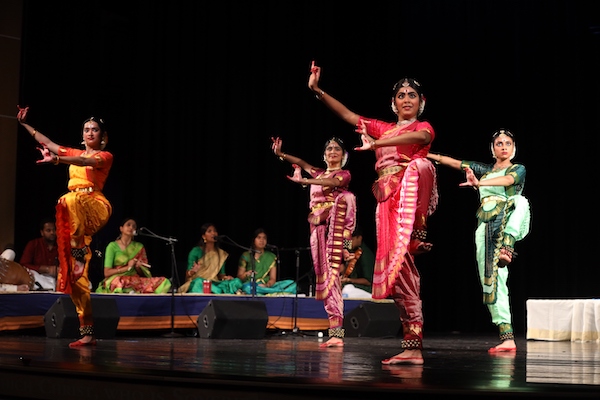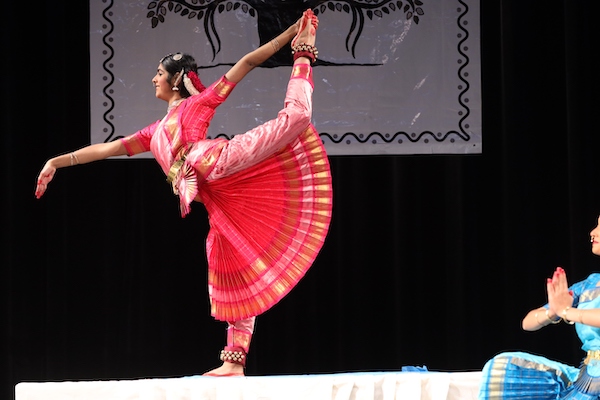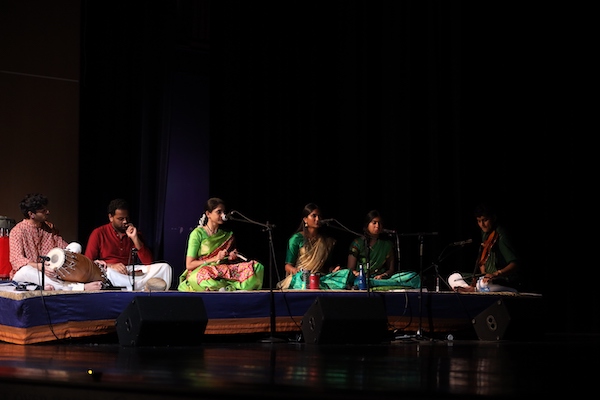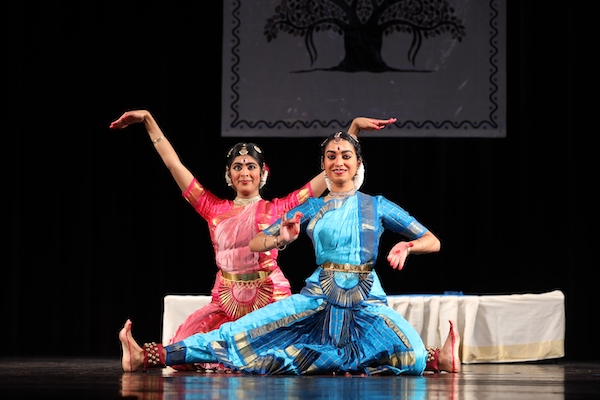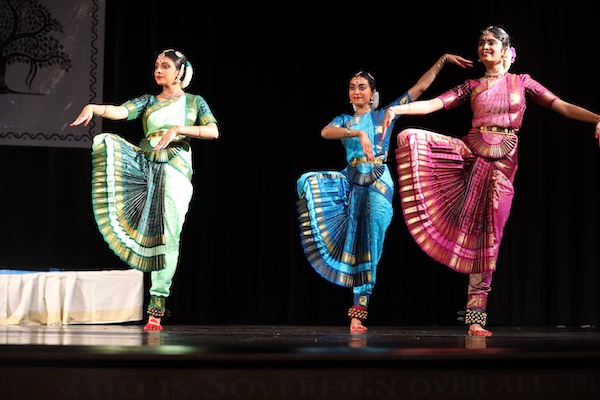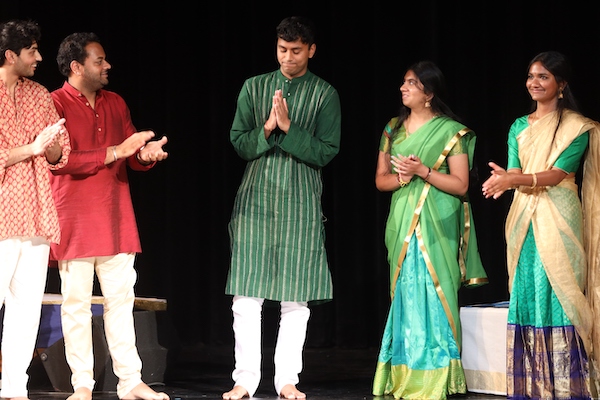Contribute
| Akshaya: A Memorable Experience |
Meena Subramanyam
08/25/2022
Akshaya: A Memorable Experience Meena Subramanyam, Artistic Director, Natyavidyalaya Sunanda Narayanan, Artistic Director of the Thillai Fine Arts Academy in Newton, MA, celebrated the 25th Anniversary of the founding of her dance school with the presentation of a thematic dance production “Akshaya†on August 6, 2022, at the Lexington Christian Academy in MA. Akshaya, presented in the traditional Bharatanatyam margam style, celebrated the everlasting divinity of Shiva and Shakti through a series of stories from Hindu mythology to highlight the true essence of the cosmic energy. A unique aspect of the presentation was that the dance and music ensemble exclusively featured young talented artists raised in the Boston area and trained in the Indian traditional arts by eminent Boston-based Gurus, Sunanda Narayanan and Jothi Raghavan (Bharatanatyam), Tara Bangalore (Carnatic vocal music and violin), and gurus Pravin Sitaram and Jayachandra Rao from Bangalore, India (percussion). The young music ensemble featuring Utsavi James (Vocal), Medha Jayendran (Vocal), Yash Ravish (Vocal/Violon) Sadhana Venkatesh (Violin) Sudharshan Thirumalai (Mridangam) and Tarun Bangalore (Ganjira) accompanying the dancers (Jaya Aiyer, Mahathi Athreya, Smitha Rajan, Divya Rajan and Sharanya Baradwaj) provided a veritable feast to the eyes and ears, transporting the audience in a spiritual journey to rediscover Shiva in his glorious manifestations as the cosmic dancer, as Ardhanarishwara and Neelakanta, and as the omnipresent preserver of the Universe. The show commenced fittingly with the rendition of the Thodaya Mangalam in the celebrated Vazhuvoor tradition, extolling Shiva as Gnanasabesha and Sakthi as Balambigai. The dancers then took the stage with a joyous verve in costumes designed in radiant colors to offer a Pushpanjali, and extolled the virtues of Shiva in “Thaayagi Thanthaiyumai†from the sixth Thirumarai of Ramalinga adigalar’s literary gem Thiruvarutpa. The vivid stage lighting and pragmatic simple setting of the stage with a raised platform was well thought out and provided the dancers ample opportunity to highlight the artistry and fluidity in the choreographed movements. The program then briskly moved on to the pièce de resistance - the dance premier of the Padavarnam composed by Sunanda’s mother, Sujatha Vijayaraghavan, a renowned musicologist and arts literary scholar. Fittingly, the stirring music set by Sunanda’s maternal grandmother, Ananthalakshmi Sadagopan, in nine different ragams, complimented the lyrics beautifully. Shankarabharanam was used to capture the essence of Shiva’s masculine energy, Kalyani to represent Shakthi’s lasya and feminine energy and Shivasakthi to emphasize the perfect union of Shiva and Shakthi. It was indeed a privilege for the audience to celebrate the legacy of artistry in the family and experience the melody, poetry, and choreographic nuances in the Varnam. The distribution of roles between dancers to describe the divinity of Siva and his association with the number 5 in the panchakshara (Na Ma Si Va Ya) mantra, and in the manifestation of the tanmatras (5 senses) and panchabutha (5 elements) was refreshing and the dance choreography for the lines depicting Siva and Shakthi as ardhanareeshwara was captivating. The tidy execution of the jathi patterns in the Varnam showcased the individual talent of the dancers and showcased the choreographic variations in rhythm and movement drawing spontaneous applause from the large appreciative audience. A variety of short, but very enjoyable pieces followed the Varnam. The lilting Nataraja Sthavam composed by Sage Pathanjali in praise of the dancing form of Nataraja in Chidambaram was performed to a vibrant 5-beat rhythm cycle, followed by Natyamado Nataraja by poet Raji Krishnan from Rhode Island. The bold demands of a devotee for the divine couple to dance together to bridge Purusha (consciousness) and Prakriti (primal energy), to remove unhealthy thoughts and illusion from the mind, was well executed. The program then moved on to a lighter note, using the traditional art form to address contemporary issues. In Aranavan Idatthey, the dancers depicted the dilemma of Shiva as the endearing father, unable to resolve the petty squabble between his children Ganesha and Muruga, until Shakthi comes to his rescue. The portrayal of the hasya rasa in discussing the length of Ganesha’s trunk and Muruga’s many eyes was both pleasing and playful. In Neelakandare Vaarum, performed as a Ninda stuti, the broader canvas of Hindu mythology was used to address the contemporary global issue of environmental pollution. The poet asks Shiva in jest, whether he could help clear the oceans of toxic pollutants just as he had done in the past by consuming the “aalakala†poison that surfaced during the churning of the milky ocean by devas and asuras in search of the elixir of immortality. The dancers played their characters beautifully to keep the audience engaged in the story line. The program concluded with a lasya laden presentation of the Thillana, the movements and formations evoking the curves and flow of Pahaadi ragam. The soulful Vachanam that followed the Thillana contrasted the permanence of human faith to the impermanence of edifices and temples. The appreciative audience thoroughly enjoyed the experience of Akshaya as the talented team of musicians and dancers successfully transformed the mundane into the sublime through a balanced presentation of dance and storytelling. The performance left connoisseurs, like myself, wishing for more.
You may also access this article through our web-site http://www.lokvani.com/
